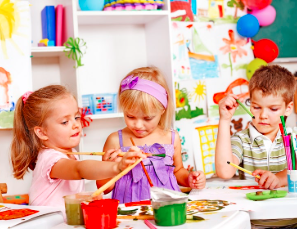Creativity is more than just drawing or painting—it’s a vital part of a child’s cognitive and emotional development. When children are given the opportunity to express themselves in imaginative ways, they learn problem-solving, self-confidence, and the joy of discovery. Fostering creativity in early learners helps build the foundation for lifelong learning and curiosity.
The Importance of Creative Exploration
Children naturally explore the world around them through creative play. Whether they’re building with blocks, engaging in pretend play, or experimenting with colors and textures, these activities support essential skills like critical thinking, communication, and emotional expression. Encouraging creativity also allows children to process experiences and express ideas that may be difficult to put into words.
Ways to Support Creativity at an Early Age
-
Offer Open-Ended Materials
Providing materials like clay, crayons, recycled boxes, and fabric scraps invites children to use their imagination. Unlike specific craft kits, open-ended tools encourage them to decide what to create, which boosts independence and innovation. -
Create a Safe Space for Expression
Let children know there are no “wrong” answers in art or play. Celebrating effort over outcomes helps them feel confident to try new things without fear of making mistakes. -
Encourage Storytelling
Reading books and asking children to tell their own stories—through words, drawings, or puppet shows—builds both literacy and creative thinking. Stories allow children to explore different perspectives and emotions in a playful way. -
Incorporate Music and Movement
Singing songs, dancing, and playing musical instruments can inspire creativity while also supporting coordination and language development. These activities offer a fun, active way for young learners to explore rhythm and expression. -
Be a Creative Role Model
When adults show their own creativity—by drawing, inventing games, or simply being curious—children are more likely to follow. Sharing your creative interests can inspire children to develop their own.
Balancing Structure and Freedom
While structure helps provide guidance, it’s important to allow room for spontaneity. A flexible routine that includes free play time gives children the space they need to explore and innovate. Encouraging questions and curiosity without rushing to correct or direct every moment fosters a love for learning.
Conclusion
Nurturing creativity in early learners isn’t about pushing them to be artists—it’s about giving them the freedom and support to think in original ways. Through open-ended play, storytelling, and expressive activities, children develop skills that will benefit them across all areas of life. By creating an environment that values imagination, caregivers and educators help children grow into confident, capable thinkers.


